
Roots
Consider, if you will, the intimate whisper carried within each curl, coil, and wave upon a head of textured hair. This isn’t merely a biological attribute; it is a profound archive, a living testament to journeys spanning continents, centuries, and countless untold stories. For those with hair that dances in its own intricate rhythm, self-expression springs not from a blank canvas, but from a rich, ancestral tapestry. This exploration delves into the very essence of that connection, seeking the enduring heritage that shapes our perception of beauty, identity, and belonging.
It’s a dialogue with the past, a recognition of how the strands atop our heads carry the wisdom of those who came before us, informing our present truths and guiding our future steps. Every twist and turn of a natural curl mirrors a lineage of resilience, creativity, and profound cultural memory.
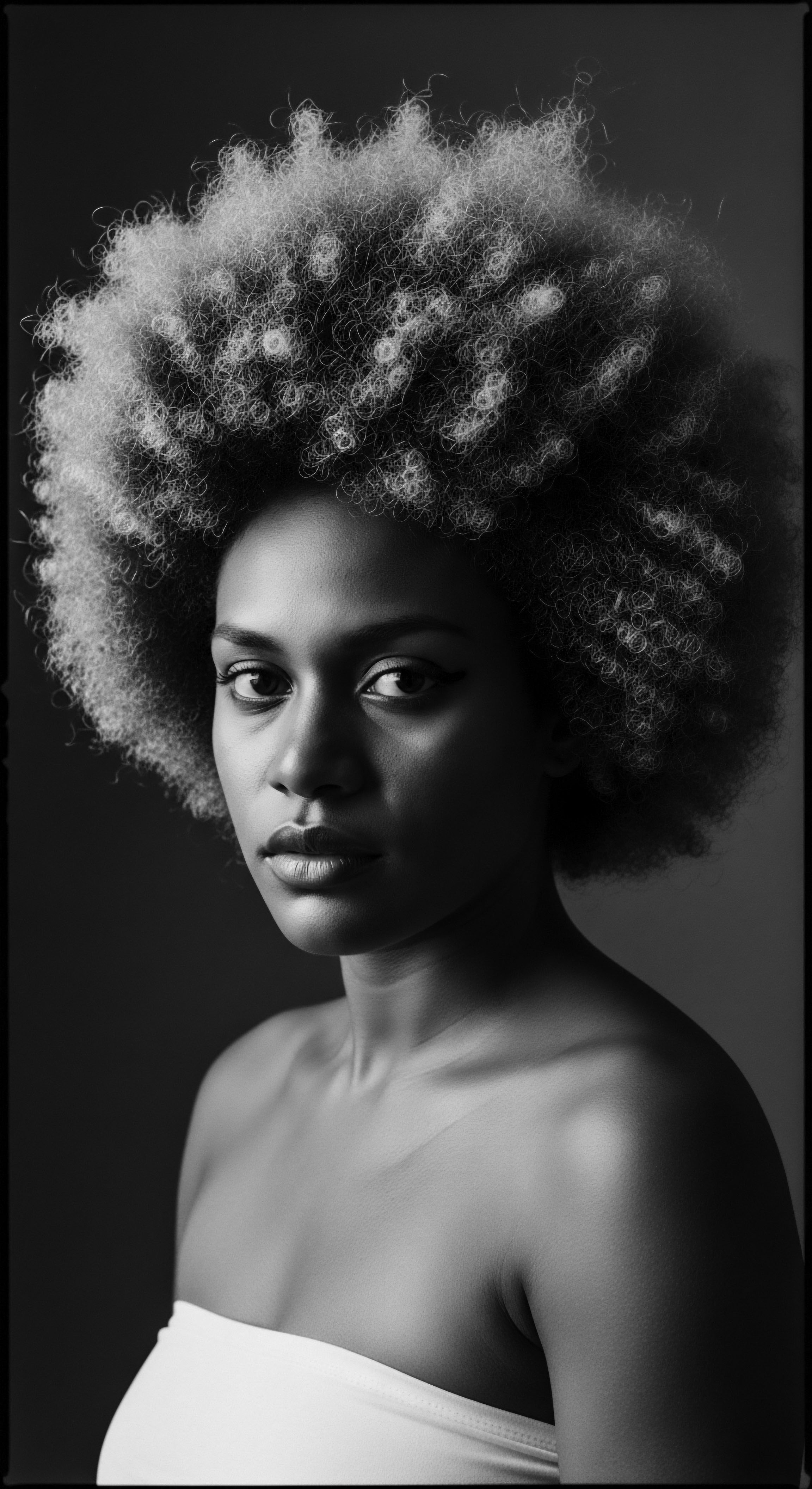
The Curvature’s Whisper, A Biological Legacy?
At its most fundamental level, the heritage of textured hair begins within the very structure of the hair shaft and its follicular birthplace. Unlike straight hair, which tends to grow from round follicles, textured hair often emerges from elliptical or oval-shaped follicles. This distinct shape, coupled with the way keratin proteins assemble and bond along the hair shaft, dictates the remarkable variety of curl patterns we observe—from gentle waves to tightly coiled spirals. The distribution of disulfide bonds within the hair cortex varies, influencing the degree of curl.
Higher concentrations of these bonds along one side of the hair shaft can lead to a more pronounced curl, a scientific marvel that speaks to the astounding biological diversity of humanity (Franbourg et al. 2003). This unique architecture means textured hair presents a greater surface area and often fewer cuticle layers, rendering it more prone to dryness and breakage if not cared for with understanding. Yet, this very characteristic, often seen as a challenge in modern contexts, was understood differently by our ancestors.
Pre-colonial African societies, for example, cultivated deep knowledge of hair’s inherent qualities, developing care regimens that honored its delicate nature. They understood, perhaps intuitively, what modern science now articulates ❉ the need for hydration, gentle manipulation, and protection. This biological blueprint, passed down through generations, is a tangible link to our origins, a living record of adaptation and distinctiveness. The very curl, therefore, is a silent narrator of ancestral journeys, a biological marker of a unique human story.

Beyond Numbers, Ancestral Categories of Hair?
While contemporary systems classify textured hair using numerical and alphabetical designations (e.g. 3A, 4C), our ancestors possessed their own intricate, culturally specific ways of distinguishing hair. These ancient classifications often extended beyond mere curl pattern, incorporating hair density, luster, length, and even its spiritual significance. Such systems were not for commercial categorization, but rather for communal understanding and the establishment of social hierarchies, familial affiliations, or spiritual roles.
- Social Identity ❉ In many West African cultures, specific hair styles and even the texture itself could denote a person’s age, marital status, or social standing.
- Spiritual Connection ❉ Hair was often considered a conduit to the divine or a repository of a person’s soul, leading to respectful handling and particular rituals surrounding its care.
- Ancestral Lineage ❉ Certain hair textures or growth patterns were sometimes associated with particular family lines or even specific ancestral spirits, tying individuals directly to their heritage.
These traditional understandings demonstrate a profound reverence for hair as an extension of self and community, a perspective that offers stark contrast to the often superficial categorizations prevalent in modern times. This heritage-driven lexicon served to affirm identity, not to fragment it.
Textured hair’s distinct biological architecture profoundly influenced ancestral care practices, shaping a heritage of mindful attention.

Words Woven from Time, The Language of Hair Heritage
The lexicon surrounding textured hair has always been rich, imbued with the cultural significance of its bearers. Long before commercial terms for curl patterns, communities spoke of hair with terms that reflected its texture, its appearance, and its role in daily life. For instance, in some Yoruba traditions, hair might be described with words that convey its softness, its springiness, or its resemblance to natural forms like ram’s horns or coiled ropes. These were not scientific terms, of course, but poetic descriptions that captured the essence and character of the hair, allowing for a shared understanding within the community.
Consider the concept of “kinks” or “coils” — terms that, while sometimes burdened with negative connotations in modern history, originally described the unique, tight formations of certain hair types with a degree of specificity and accuracy. These terms have deep roots, tracing back to descriptive language that sought to capture the distinctive natural appearance of hair that defies gravity and embraces its own intricate structure. This historic linguistic framework helps us appreciate the depth of knowledge held by our ancestors about their hair, a knowledge that was passed down through oral tradition and lived experience, shaping the language of textured hair itself.
| Traditional Concept "Ram's Horn" (Yoruba, metaphorical) |
| Implicit Meaning in Heritage Dense, tightly coiled, resilient hair; connection to strength. |
| Modern Parallel or Scientific Link Highly coiled hair, often 4C or similar, with strong internal structure. |
| Traditional Concept "Cotton Hair" (Historical, descriptive) |
| Implicit Meaning in Heritage Soft, fluffy, easily matted hair; delicate and absorbent. |
| Modern Parallel or Scientific Link Hair with high porosity and fine strands, requiring careful handling. |
| Traditional Concept "Springy Coils" (Diasporic, general) |
| Implicit Meaning in Heritage Hair with notable elasticity and bounce; a mark of healthy hair. |
| Modern Parallel or Scientific Link Hair with good elasticity, indicating strong disulfide bonds and hydration. |
| Traditional Concept Understanding these historical descriptors offers a clearer view into how hair was perceived and valued within ancestral contexts. |
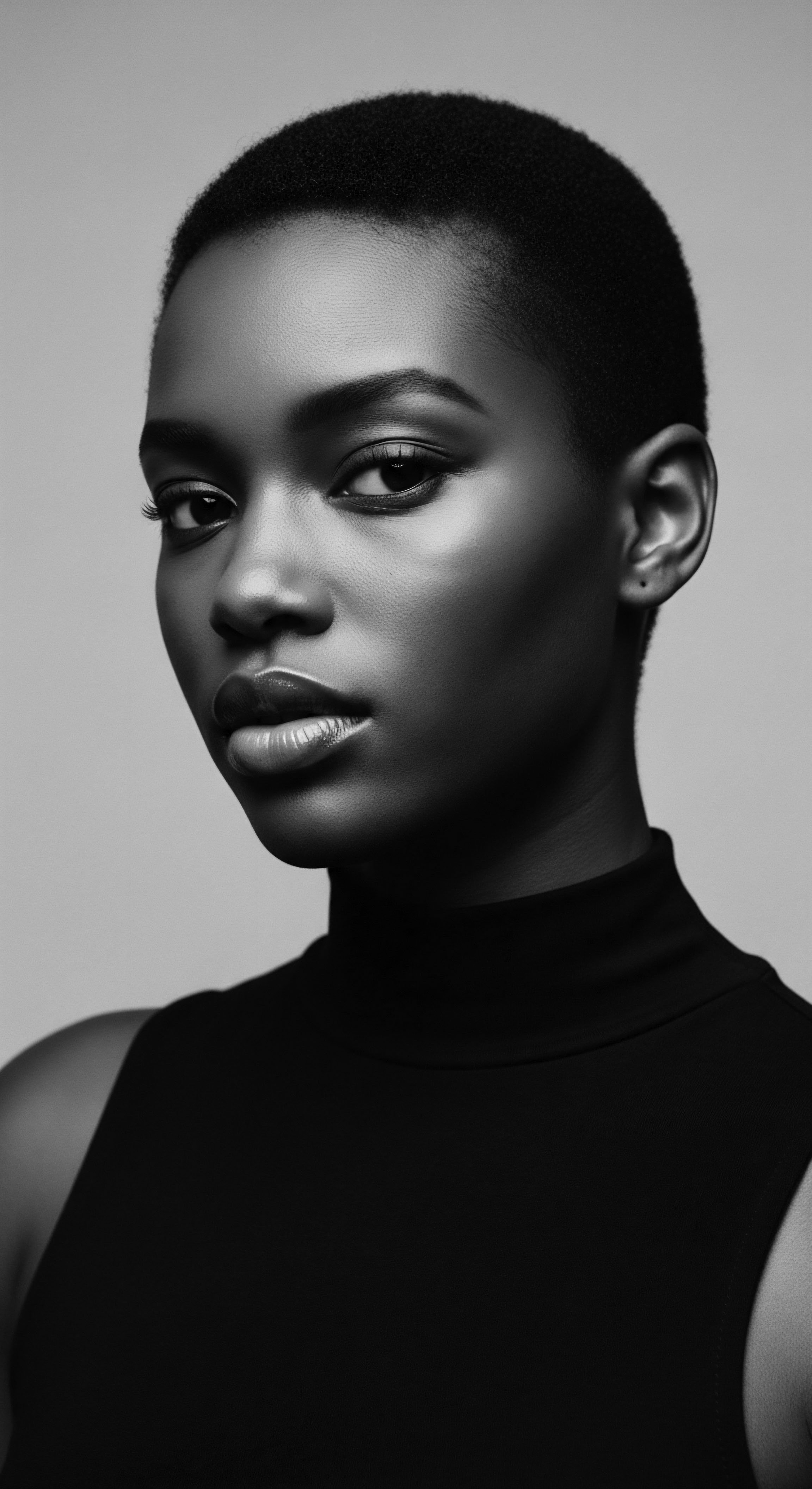
Seasonal Rhythms, Hair’s Enduring Connection to Life’s Cycles?
The rhythm of hair growth, its cycles of anagen, catagen, and telogen phases, is a biological constant. Yet, the factors influencing these cycles, such as nutrition, stress, and environmental conditions, were deeply understood by ancestral communities. Their approach to wellness was holistic, recognizing that hair health was intrinsically linked to overall bodily equilibrium.
Dietary practices, often seasonal and locally sourced, provided the necessary nutrients for healthy hair growth. Foods rich in vitamins, minerals, and essential fatty acids—derived from vibrant, indigenous agriculture—supported the very foundation of robust strands.
Moreover, the understanding of environmental impacts, from sun exposure to humidity, informed practical adaptations in hair care. Protective styles, for example, were not merely aesthetic choices; they were strategic responses to environmental realities, shielding hair from harsh elements and minimizing mechanical stress. This symbiotic relationship between human care, natural rhythms, and the environment forms a heritage of wellness that views hair as an integral part of a flourishing individual, reflective of their surroundings. This connection to the land and its offerings for sustenance and healing represents a wisdom that transcends time, reminding us that true radiance often begins with honoring our deepest connections to the world around us.

Ritual
The enduring heritage of textured hair manifests powerfully through the rituals of styling, a rich tapestry of techniques, tools, and transformations passed down through generations. These acts of adornment transcend mere aesthetics; they embody storytelling, resistance, communion, and profound self-definition. From the ancestral villages of Africa to the bustling metropolises of the diaspora, hair styling has consistently been a medium through which identity is asserted, history is preserved, and futures are envisioned. Every twist, braid, and coil is a deliberate stroke in a larger narrative, one that speaks volumes about cultural continuity and personal expression.

Protective Styling, Echoes of Ancestral Genius?
Protective styling, a cornerstone of textured hair care today, possesses roots stretching back thousands of years into diverse African civilizations. These styles—braids, twists, bantu knots, and various forms of intricate coiffure—were not simply about beauty. They were practical solutions for maintaining hair health in challenging climates, minimizing tangling, and preserving moisture. Beyond practicality, they served as visual languages, conveying social status, tribal affiliation, marital standing, and even religious beliefs.
For example, ancient Egyptian hairstyles, often depicted in hieroglyphics and artifacts, demonstrate sophisticated braiding techniques and the use of extensions, signifying wealth and spiritual connection. The meticulous nature of these styles speaks to the value placed on hair as a public declaration of identity.
In the transatlantic slave trade’s devastating wake, these styles became clandestine maps and symbols of resistance. Braids, specifically, were sometimes used to conceal rice grains, seeds, or gold, serving as literal lifelines for those escaping bondage. The act of braiding itself became a quiet act of defiance, a way to hold onto cultural memory and hope in the face of unimaginable oppression. This historical context imprints protective styles with a powerful heritage of resilience and ingenuity, making them far more than just hair arrangements; they are living testaments to survival and enduring spirit.
Styling textured hair is a continuum of cultural expression, deeply rooted in ancestral practices of resilience and identity.
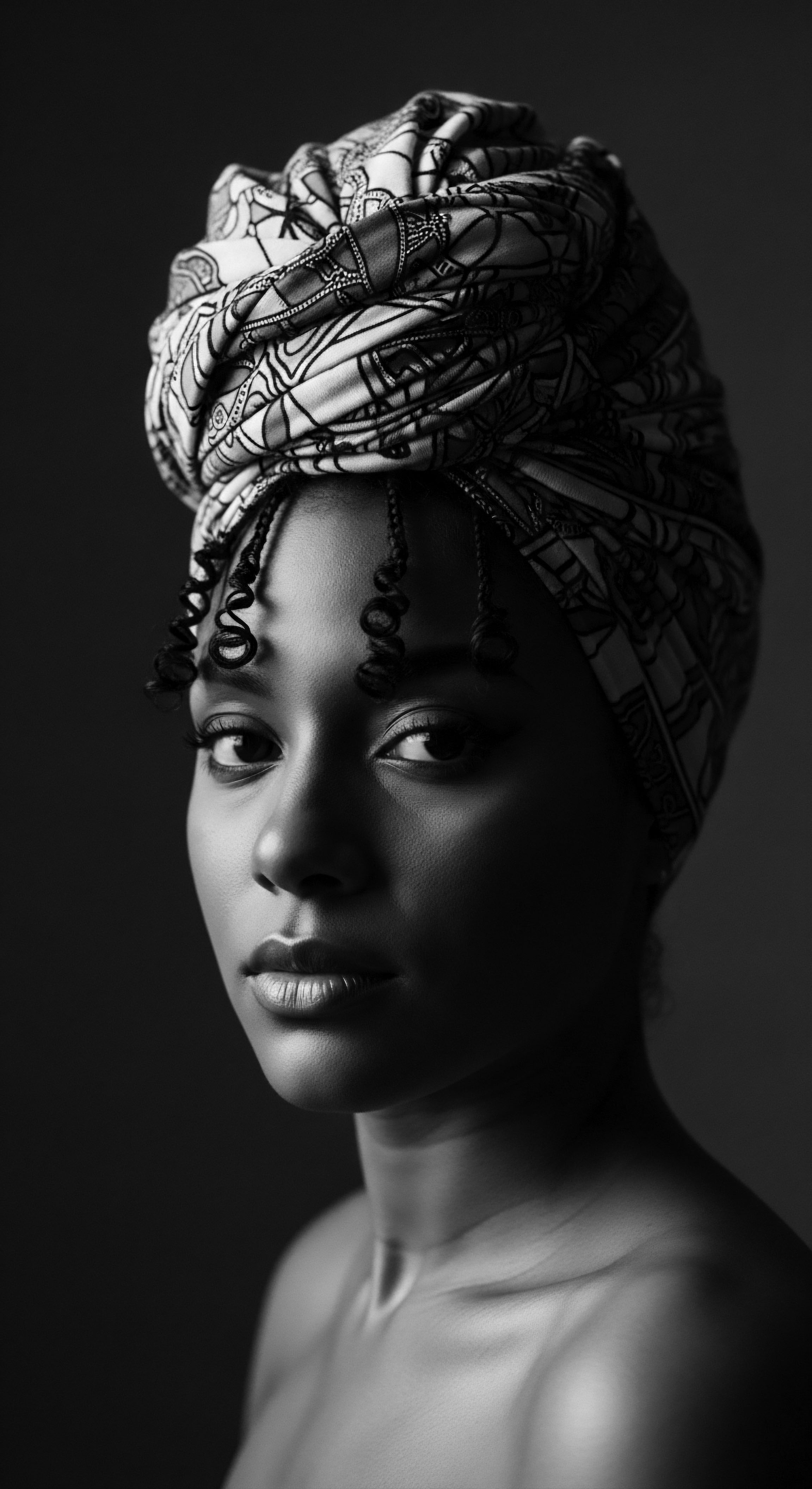
Natural Definition, A Return to Ancient Wisdom?
The contemporary movement toward embracing natural texture finds deep resonance with ancient traditions where hair was celebrated in its unaltered state. Before the widespread introduction of chemical relaxers, methods for enhancing and defining natural curls were largely manual and based on observation of hair’s inherent qualities. Techniques often involved the precise application of plant-based oils and butters, combined with finger manipulation to encourage curl formation and reduce frizz. Hair was not forced into a new shape, but rather coaxed and nurtured into its most vibrant natural presentation.
For instance, the use of shea butter, palm oil, and various herbal infusions was widespread across different African communities. These natural substances provided slip for detangling, moisture for definition, and a protective barrier against environmental aggressors. The methods were often communal, with women gathering to style each other’s hair—an act that strengthened social bonds and passed down generational wisdom. This collective ritual elevated hair care from a solitary chore to a shared experience, a testament to the enduring communal aspect of textured hair heritage.
- Coil Definition ❉ Manual coiling of individual strands or small sections to create distinct, springy coils, often with added plant-based emollients.
- Twist Out Preparation ❉ Hair twisted into two-strand twists or braids, allowed to dry, then gently unraveled for a stretched, defined look, a method with deep historical parallels.
- Finger Raking & Shingling ❉ Using fingers to separate and define curls while applying a conditioning agent, mirroring ancient detangling and shaping techniques.
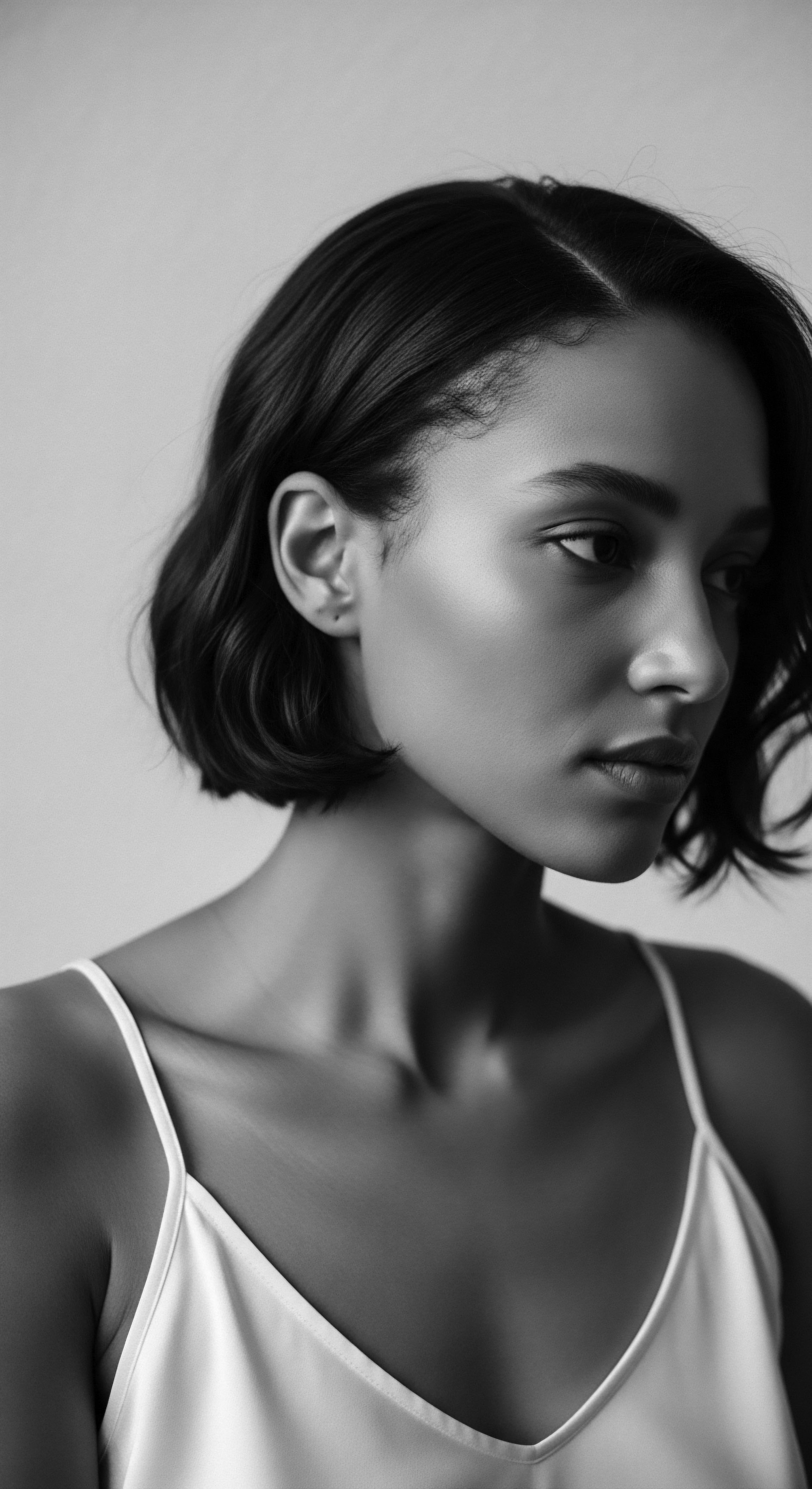
Wigs and Adornment, Historical Statements of Self?
The practice of using wigs and hair extensions holds a profound historical lineage in textured hair heritage, dating back thousands of years. Far from being a modern invention, these adornments were integral to ancient African societies, serving diverse purposes that ranged from ceremonial and spiritual to practical and aesthetic. In ancient Egypt, wigs were not merely fashion statements; they were symbols of status, hygiene, and ritual purity, worn by both men and women across social strata (Brewer & Teeter, 1999). Crafted from human hair, plant fibers, or even wool, these elaborate pieces were meticulously styled and adorned with precious materials, reflecting sophisticated artistic and technical skills.
Beyond Egypt, various West African cultures utilized hair extensions and added fibers to create voluminous and often gravity-defying styles, sometimes incorporating clay, ochre, or other natural elements to construct elaborate coiffures that could signify tribe, age, or readiness for marriage. These were not tools for disguise, but rather powerful declarations of identity and affiliation. The enduring practice of using wigs and extensions in Black communities today, therefore, carries this profound historical weight, standing as a continuation of an ancestral tradition of versatility, expression, and the intentional shaping of one’s visual identity.
Even in contemporary contexts, the decision to wear a wig or extensions often connects to a historical continuum, allowing for stylistic adaptability while also offering protection for one’s natural hair. This adaptability, rooted in centuries of practice, speaks to the dynamic and resilient nature of textured hair expression.

Relay
The legacy of textured hair care, its rituals, and its deep connection to self-expression continues through a vital relay of knowledge, evolving yet rooted in ancestral wisdom. This relay addresses not only the daily care of strands but also the holistic well-being intertwined with hair health. The challenges textured hair faces, from managing dryness to minimizing breakage, find solutions that resonate with historical practices, often validated by contemporary science. This ongoing transmission of wisdom, adapted for new contexts, ensures that the heritage of textured hair remains a living, breathing guide for self-care and identity.
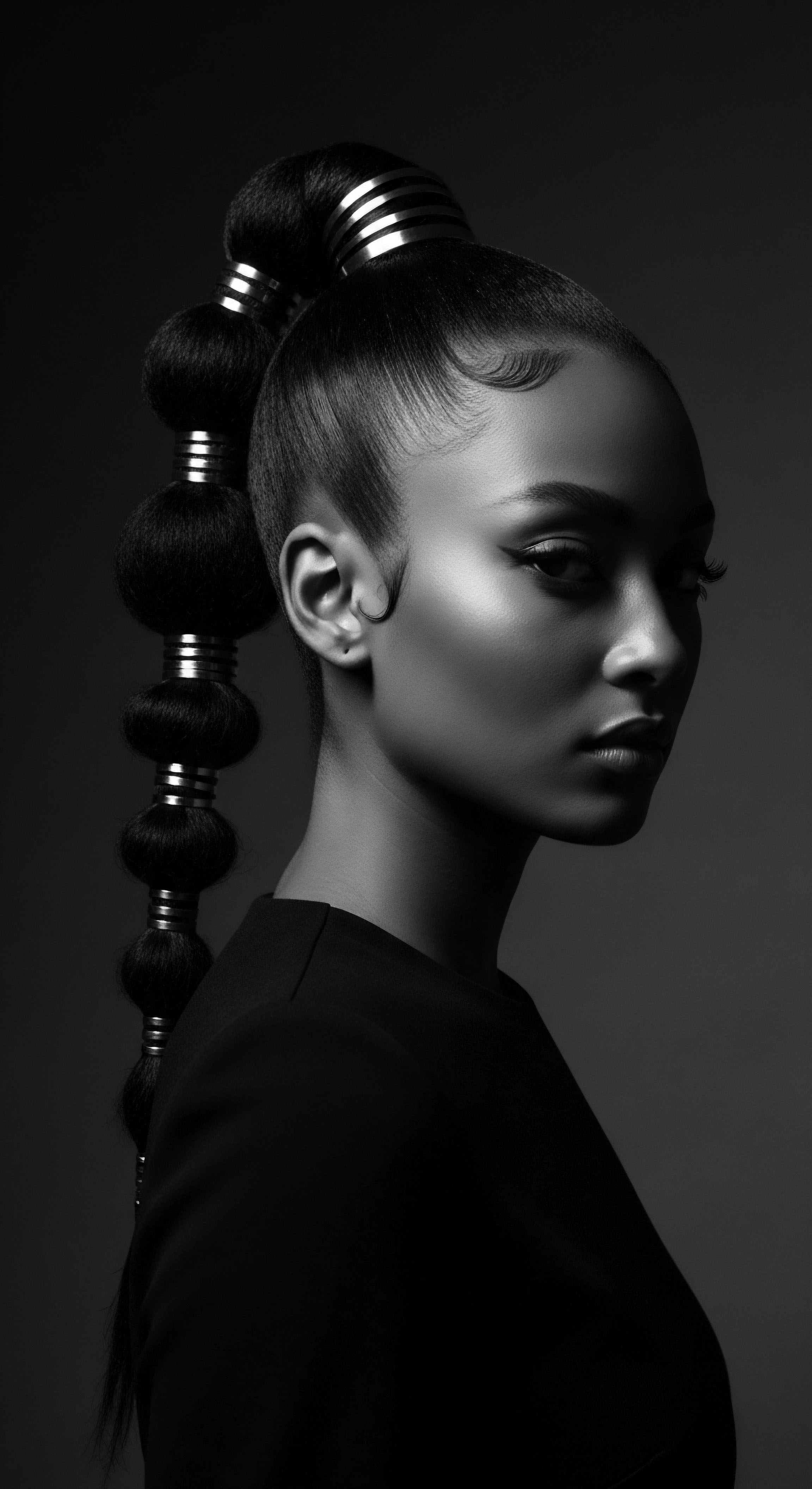
Building Personalized Regimens, What Can Ancestral Wisdom Offer?
The concept of a “personalized regimen” might seem like a contemporary wellness trend, yet its roots lie in ancestral observations of individual needs and responses to environmental factors. Traditional healers and caregivers understood that no two heads of hair were exactly alike, even within a family or community. They relied on keen observation, trial, and error, and the passed-down wisdom concerning specific plant applications or care techniques for differing hair conditions. This intuitive approach, combined with a deep understanding of local flora, enabled the creation of highly individualized care.
Modern science now provides tools to quantify what our ancestors observed. Understanding hair porosity, elasticity, and density allows us to select products and practices that mimic the success of traditional formulations. For example, hair with high porosity, which readily absorbs moisture but also loses it quickly, benefits from heavier oils and butters that create a seal—a practice common in many African hair care traditions where substances like shea butter or palm kernel oil were used to protect and seal moisture into the hair shaft. This synthesis of ancient observation and modern scientific understanding forms the foundation for truly effective hair care, proving that the relay of knowledge is not simply about preservation but also about dynamic reinterpretation.
Contemporary hair care draws strength from ancestral wisdom, blending time-honored practices with modern scientific understanding.

The Nighttime Sanctuary, The Ancient Roots of Protective Rest?
The importance of protecting textured hair during sleep is a practice steeped in ancestral heritage, long before the advent of silk bonnets or satin pillowcases. Early protective measures were born of necessity and knowledge, aiming to preserve elaborate styles, prevent tangling, and maintain hair’s delicate moisture balance overnight. In various West African cultures, intricate hairstyles were often meticulously prepared to last for days or weeks, requiring methods to keep them intact during sleep.
This might involve wrapping hair with soft fabrics or using natural fibers to create head coverings that minimized friction and preserved the integrity of coiffures. The underlying principle was clear ❉ reduce damage and maintain hair health while resting.
The widespread use of head wraps and hair coverings in African societies, beyond daily wear, also served this protective function. These traditional coverings, often made from cotton or other natural textiles, offered a barrier against dust, environmental elements, and the abrasive effects of sleeping surfaces. The modern bonnet, therefore, is a direct descendant of these ancient practices, carrying forward a legacy of mindful care and proactive protection.
Its soft, non-absorbent material helps retain the hair’s natural oils and moisture, preventing the dryness and breakage that can result from friction against cotton pillowcases. This simple accessory, often taken for granted, is a potent symbol of continuity, linking present-day routines back to centuries of ancestral wisdom concerning hair preservation.

Ingredient Deep Dives, The Earth’s Bounty for Hair’s Heritage?
The effectiveness of many traditional hair care ingredients, long utilized in African and diasporic communities, is increasingly validated by scientific research. These ancestral remedies often relied on readily available botanicals, rich in properties that address the unique needs of textured hair. The selection of these ingredients was not arbitrary; it was born from generations of empirical observation and a profound connection to the natural world.
Consider the widespread reverence for certain plants ❉
- Shea Butter (Butyrospermum parkii) ❉ Originating from the shea tree in West Africa, this butter was and remains a staple. Its high concentration of fatty acids, particularly oleic and stearic acids, provides exceptional emollient and moisturizing properties, crucial for sealing moisture into textured strands (Akihisa et al. 2010).
- Aloe Vera (Aloe barbadensis miller) ❉ Though found globally, its use in hair care across many indigenous communities is historical. Its mucilaginous gel offers hydrating and soothing qualities, promoting scalp health and providing slip for detangling.
- Hibiscus (Hibiscus sabdariffa) ❉ Used in parts of Africa and Asia, hibiscus flowers and leaves were traditionally steeped to create rinses or pastes. The mucilage present acts as a natural conditioner, adding slip and promoting shine, while its antioxidant properties may support scalp vitality.
These examples illustrate a foundational principle ❉ that the earth provides what is needed for wellness. The careful observation of these plants, understanding their properties, and integrating them into daily routines speaks to an ancestral scientific inquiry, long before laboratories and chemical analyses. This collective wisdom, passed down through oral traditions and communal practice, is a tangible aspect of the enduring heritage of textured hair care. It underscores a deep respect for natural resources and a practical ingenuity that continues to inform modern formulations.
| Traditional Concern Dryness & Brittleness |
| Ancestral Solution/Practice Regular application of plant oils (e.g. shea, coconut, palm), water-based rinses. |
| Modern Scientific Understanding/Approach Emphasis on humectants (glycerin, hyaluronic acid), emollients (fatty alcohols, plant oils), and occlusives to seal moisture; low-porosity hair care. |
| Traditional Concern Breakage & Tangling |
| Ancestral Solution/Practice Protective styles (braids, twists), wide-tooth combs from natural materials, finger detangling. |
| Modern Scientific Understanding/Approach Focus on gentle manipulation, minimal friction, use of wide-tooth combs or detangling brushes, protein treatments for strengthening. |
| Traditional Concern Scalp Issues (Itchiness, Flaking) |
| Ancestral Solution/Practice Herbal rinses (e.g. neem, tea tree infusions), scalp massages with antiseptic oils. |
| Modern Scientific Understanding/Approach Use of anti-fungal ingredients (pyrithione zinc, ketoconazole), salicylic acid for exfoliation, soothing botanicals. |
| Traditional Concern The fundamental aims of hair care remain consistent, with ancestral wisdom often providing the blueprint for effective modern solutions. |
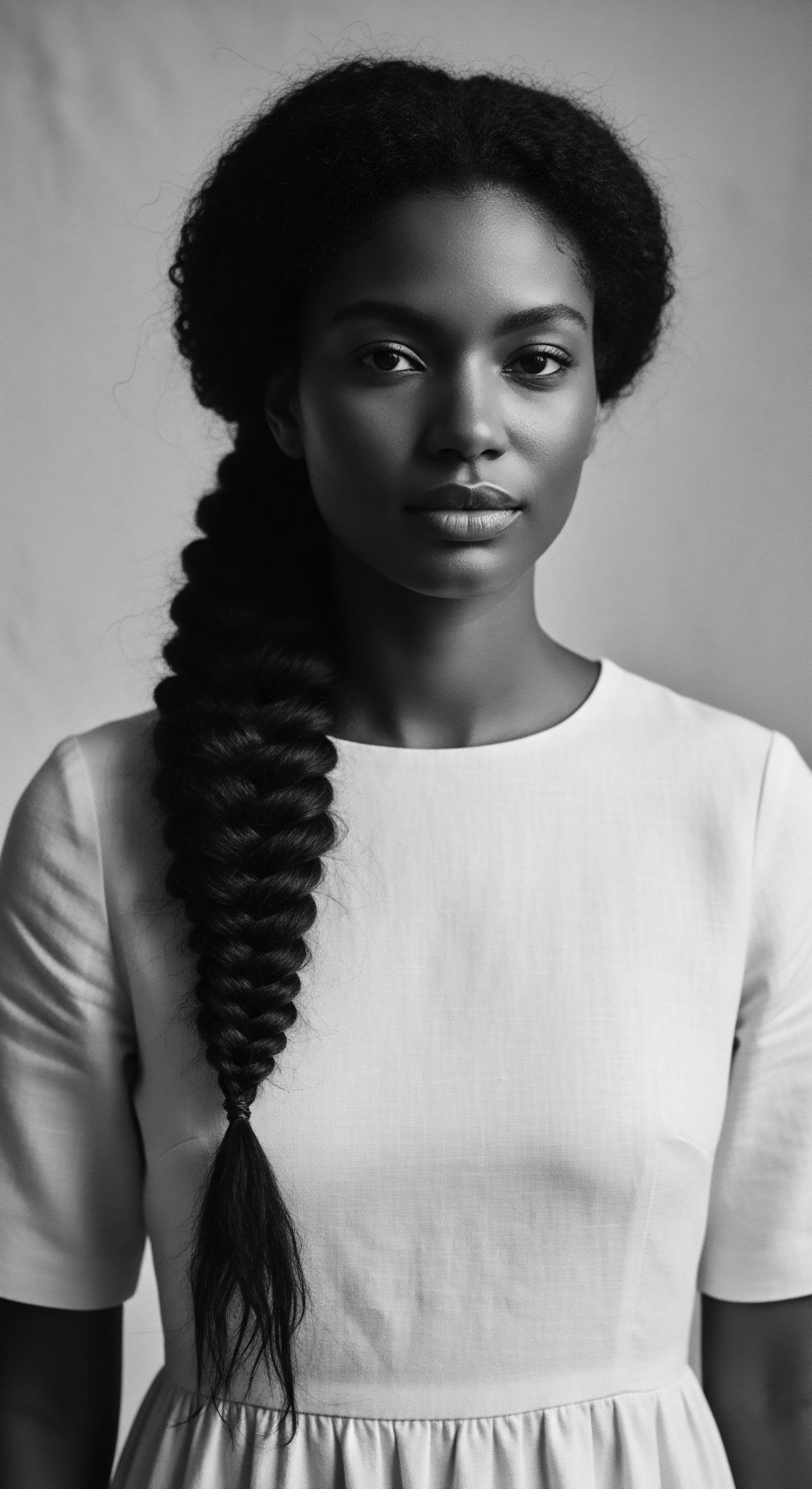
Reflection
The journey through the enduring heritage of textured hair in self-expression reveals a lineage both resilient and vibrant. This exploration has traced the echoes from fundamental biology, through the tender threads of care and community, to the unbound helix of identity. It becomes clear that textured hair is far more than mere adornment; it is a profound living archive. It holds within its very structure and the stories of its care a wisdom that transcends time.
This wisdom speaks of resilience in the face of adversity, creativity born from resourcefulness, and a boundless capacity for self-definition. Each curl, coil, and wave carries the genetic memory of ancestral journeys, a testament to the triumphs and innovations of generations past.
The reverence for hair, once a cornerstone of many ancestral communities, continues to resonate, reminding us that care for our strands is deeply connected to care for our whole selves. This heritage invites us to engage with our hair not as a problem to be solved, but as a gift to be honored. It is a call to listen to the whispers of tradition while embracing the insights of contemporary understanding, allowing the collective wisdom of those who came before us to inform our path forward.
The legacy of textured hair is not static; it is a dynamic force, constantly inspiring new forms of expression while remaining firmly anchored in its ancient roots. It is a continuous narrative of identity, spun from the very ‘Soul of a Strand.’

References
- Akihisa, T. Kojima, N. Kikuchi, T. Yasukawa, K. Tokuda, H. & Takido, M. (2010). Anti-inflammatory and chemopreventive effects of shea butter (Butyrospermum parkii) and its components. In Proceedings of the 23rd IFSCC Congress.
- Brewer, D. J. & Teeter, E. (1999). Ancient Egypt ❉ Ancient Egyptian Hair and Hairdressing. Harry N. Abrams.
- Franbourg, A. Hallegot, P. Baltenneck, F. Toutain, C. & Leroy, F. (2003). Current research on ethnic hair. Journal of the American Academy of Dermatology, 48(6), S115-S119.
